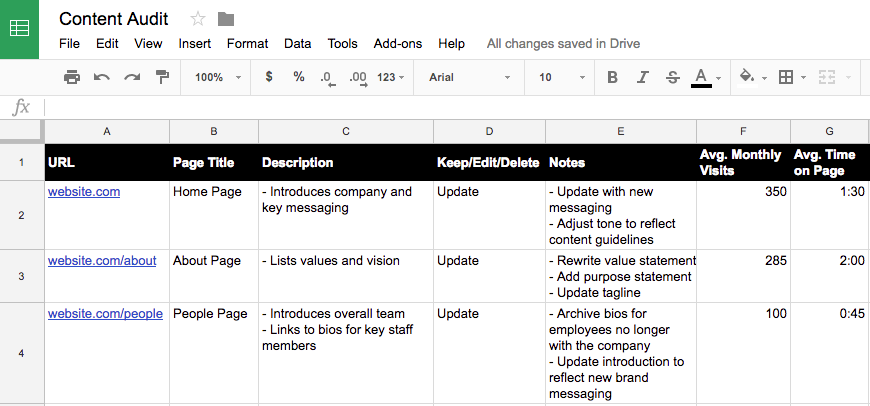What Is Content Strategy, Anyway?

“So what do you do?” As a content strategist, this question can be a tricky one. Outside of work hours, I tend to spare the person asking by keeping my response short and simple — but Monday through Friday, that answer gets a bit more complex.
We can’t all live in blissful ignorance of content audits and editorial calendars, and believe it or not, “What is content strategy?” really is a question that people are asking, now more than ever. Google Trends says so.
Defining Content Strategy
The internet holds no shortage of content strategy definitions, and some are better than others. Below are a few of the industry standards, straight from the women who wrote the books on it:
- Kristina Halverson: “Content strategy plans for the creation, delivery, and governance of useful, usable content.”
- Rachel Lovinger: “Content strategy is to copywriting as information architecture is to design.”
- Erin Kissane: “Every website has content. Companies with three-page websites probably only need a writer. But those with hundreds or thousands of pieces of online content need someone who can stand back and figure out what all that content should communicate. They also need someone to decide how best to communicate it, who should make it, and so on — a sort of combination editor-in-chief and air traffic controller. They need a content strategist.”
Here at TOKY, we define content strategy as the people, policies, and processes that govern the creation and maintenance of website content.
5 Questions Content Strategy Can Answer
Those definitions describe a lot of big ideas — but what are you actually getting out of the investment? Here are some of the most important answers that content strategy will provide for your team.
Question 1 /
Which existing content doesn’t belong?
A content audit can help you understand which content already exists on your site. You may be thinking, “Of course I know which content is on my site,” and while that may well be true, the process of going through each and every page is invaluable. Taking inventory of what you already have will force you and your team to look closely at every headline, text block, and image — and chances are, you’ll uncover a few things that are no longer relevant or in need of critical updates.

Question 2/
Which content is missing from my existing site?
With a content audit complete, you can perform a gap analysis. This is a fancy term for identifying anything that’s missing from your existing site, whether that’s messaging, product shots, descriptions of services, or calls to action.
Question 3 /
What are the proper messages, voice, and style?
As you’re sifting through existing content, you’ll likely find pages that are written in the right voice and with perfect grammar — but you’re also going to find some less-than-ideal content.
If you’ve already identified your voice, style, and standards, you can get to work comparing existing content to these guidelines. Pages that meet the standards can stay as is; those that fall short will need to be updated.
If you’re thinking, “What standards?” that’s okay, too. This is the perfect time to take a step back and define your messaging, voice, and style in what we call a content style guide. This will become the content bible for anyone who writes, edits, uploads, or evaluates content now or in the future. Here are a few great examples of these guidelines from Slack, MailChimp, and 18F. I promise you’ll thank yourself later for creating this document.
Question 4 /
Who is responsible for content production, editing, and upload?
At this point in the process, you’ve identified what needs to be updated, deleted, and created. So who’s going to do all this work, from writing to editing to uploading? And once all is said and done, who will be responsible for ensuring that this content stays up to date? The sooner you can assign these roles and responsibilities, the better — otherwise, your team will be left with a whole lot of tasks and no one to complete them.
Question 5 /
What is the workflow for content production?
With roles in place, the next important step is to identify workflow. What is the order in which the brainstorming, writing, editing, approvals, and publishing will happen? How long will each step take and when can we expect these to be complete? Mapping these tasks out on a workflow chart or in a calendar will keep your team on task.

—
There are a lot of moving parts in the content strategy process, but answering these questions sooner rather than later lays the foundation for a site that works for your audience and the people who manage content on a day-to-day basis. It may not be the best cocktail party conversation, but in the end, content strategy pays off.